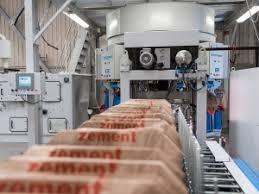Cement Packaging Market Overview: Growth Prospects, Key Materials, and Market Outlook

The cement packaging market has become an essential segment within the construction materials supply chain. With global infrastructure development and urbanization projects accelerating, the demand for efficient, reliable, and sustainable cement packaging solutions is on the rise. Manufacturers are focusing on improving packaging materials and technologies to address market demands related to durability, environmental compliance, and cost-effectiveness.
Market Overview and Current Dynamics
Cement is highly susceptible to moisture, contamination, and physical damage, making robust packaging critical for maintaining its quality from production sites to construction locations. The cement packaging market primarily serves the residential, commercial, and industrial construction sectors, where cement consumption remains consistently high.
The market is witnessing significant evolution, with traditional materials like jute and paper bags gradually replaced by advanced polypropylene (PP) woven bags, multi-wall paper bags, and flexible intermediate bulk containers (FIBCs). The shift towards eco-friendly and high-performance packaging solutions is further fueled by environmental concerns and stringent regulatory requirements.
Key Materials and Packaging Solutions
1. Polypropylene Woven Bags
Polypropylene woven bags have emerged as the most widely used packaging solution in the cement industry. These bags offer superior durability, moisture resistance, tear strength, and easy handling, making them suitable for both local and international cement transportation.
PP valve bags, in particular, are gaining traction due to their secure sealing features, reduced product wastage, and lightweight structure that enhances logistics efficiency. Their cost-effectiveness and durability make them a preferred choice for cement manufacturers globally.
2. Multi-Wall Paper Bags with Enhanced Liners
Multi-wall paper bags, often reinforced with protective liners, continue to be used in markets that prioritize biodegradable or recyclable packaging. These bags provide reasonable protection against environmental factors while meeting regulatory guidelines for sustainable materials.
Though not as durable as PP bags, advancements in coating technologies and liner integration are improving the strength and moisture resistance of paper-based cement packaging.
3. Flexible Intermediate Bulk Containers (FIBCs)
FIBCs, or bulk bags, are designed for transporting large volumes of cement, especially for export markets and bulk construction projects. These containers offer excellent strength, reusability, and environmental protection, minimizing product loss during long-distance transportation.
FIBCs are gaining popularity in high-production regions due to their efficiency in reducing handling times, optimizing storage space, and lowering transportation costs.
Regional Market Overview
The cement packaging market exhibits varying growth trends across different regions:
-
Asia-Pacific: The largest and fastest-growing region, driven by booming construction activity in China, India, and Southeast Asia. Infrastructure development, smart cities, and affordable housing initiatives are fueling demand for high-quality cement packaging.
-
Middle East and Africa: Significant growth potential due to urbanization, large-scale construction projects, and increased cement production in countries like Saudi Arabia, the UAE, and South Africa.
-
North America and Europe: Demand is shifting towards sustainable packaging solutions, with advanced construction techniques and environmental regulations encouraging innovation.
-
Latin America: Moderate market growth supported by ongoing infrastructure development and improvements in the construction supply chain.
Market Drivers and Opportunities
The cement packaging market is driven by several key factors, including:
-
Rapid Urbanization and Infrastructure Expansion: Global demand for housing, transportation networks, and commercial buildings is boosting cement consumption and, consequently, the need for efficient packaging.
-
Material Innovations: Advancements in PP bags, biodegradable films, and moisture-resistant liners are enhancing packaging performance and addressing market demands for durability and sustainability.
-
Environmental Regulations: Increasing regulatory pressures to reduce plastic waste and carbon emissions are pushing manufacturers to adopt recyclable, eco-friendly packaging solutions.
-
Export Growth: As cement trade expands, especially from major producers in Asia and the Middle East, the demand for durable, bulk packaging such as FIBCs continues to rise.
Conclusion and Future Outlook
The cement packaging market is poised for steady growth, driven by the global construction boom, material innovations, and evolving environmental standards. As infrastructure projects multiply worldwide, the demand for efficient, durable, and sustainable packaging will remain strong.
Manufacturers focusing on high-performance materials, eco-friendly packaging solutions, and advanced logistics technologies are well-positioned to capitalize on emerging market opportunities. With continued investments in product innovation and sustainability, the cement packaging market is expected to play a pivotal role in ensuring the safe, efficient, and environmentally responsible distribution of cement across global construction sectors.
- Art
- Causes
- Crafts
- Dance
- Drinks
- Film
- Fitness
- Food
- Games
- Gardening
- Health
- Home
- Literature
- Music
- Networking
- Other
- Party
- Religion
- Shopping
- Sports
- Theater
- Wellness


